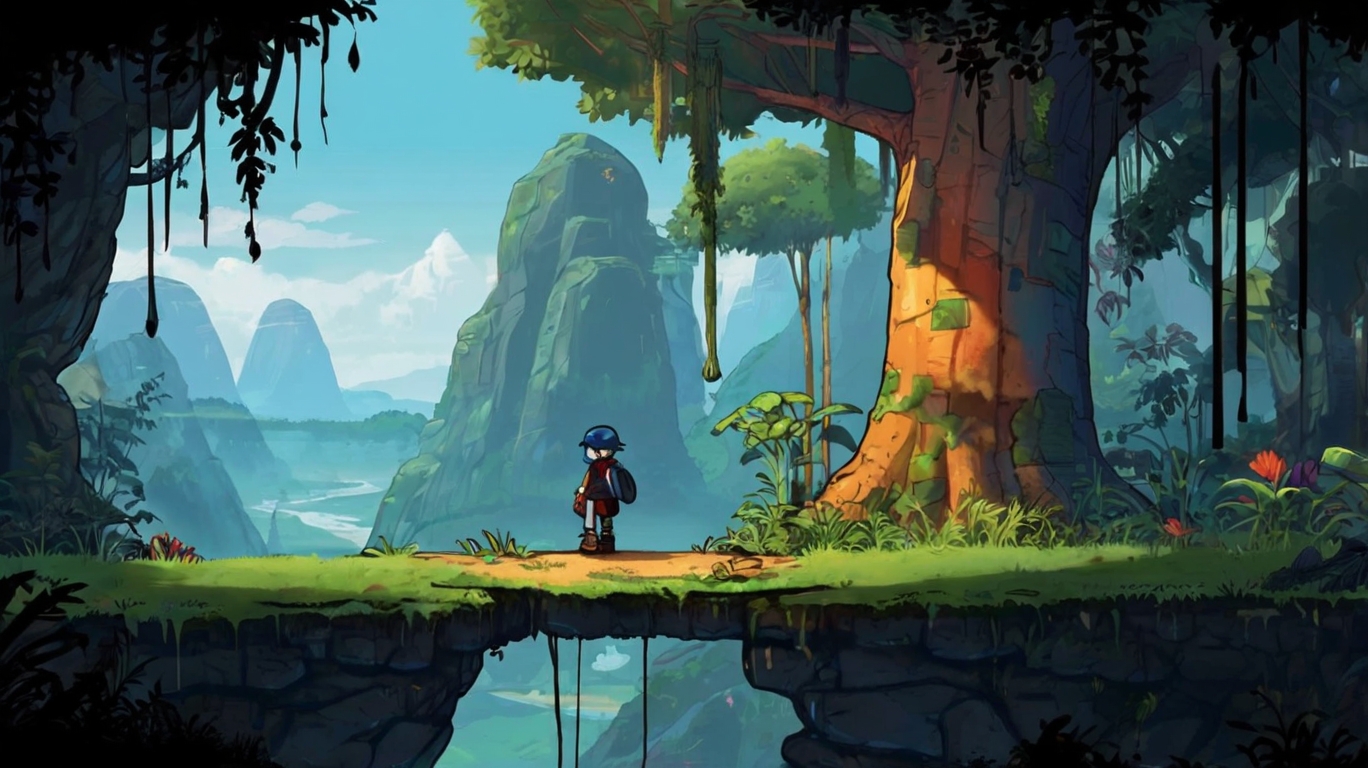
In video games, visual effects are just as important as gameplay. Great art is more than just eye-catching graphics, as we at Melior Games know; it is the foundation of an engaging narrative and memorable gaming experiences. As a game art company, we pride ourselves on providing premium 2D and 3D game art services tailored to each client’s vision. This article will explore the basics of 2D video game art and the specifics that bring games to life.
What is 2D Video Game Art?
2D art creates flat, two-dimensional visuals to illustrate characters, environments, items, and other elements within a game. Unlike 3D models, 2D art has only height and width, giving it a stylized, illustrative feel. Despite its “flat” nature, 2D art can convey depth, perspective, and movement through skilled shading, layering, and animation. 2D art spans from pixel art to intricate digital paintings, allowing artists to bring entire worlds to life with unique textures, colors, and details.
2D Animation: Breathing Life into Static Art
Animation brings two-dimensional images to life, making the game more dynamic. 2D animation can range from simple movements such as eye blinking to complex fluid actions such as combat movements or environmental changes. Animators create realistic visual effects that respond to player actions and enhance gameplay using various techniques. The most common are stop-motion animation and rigging, where character figures move around a skeletal structure. Classic games (Street Fighter) and modern indie games (Cuphead) showcase the power of 2D animation to display a distinct aesthetic that enriches the player experience.
Roles of 2D Artists
2D artists are responsible for creating visuals that match the game’s style, setting, and story. The creation of initial concepts, the development of backgrounds, and the animation of characters are all works of 2D artists that play a central role in defining the game’s visual language. 2D artists work closely with programmers, game designers, and 3D artists to guarantee a unified and harmonious result. 2D artists have unique skills and areas of expertise that allow them to improve their skills and expand their creative expression.
Specializations of 2D Artists
Artists in the varied field of 2D art have specialized fields of expertise. Here’s an overview of some of the key roles 2D artists play in the games industry.
- Conceptual artists
Concept artists are the creators behind the game’s appearance. The rest of the art team uses their rough sketches and drawings as a guide to set the tone. From landscapes to character concepts, concept art serves as the basis for more intricate pieces.
- Illustrators
Illustrators focus on creating detailed images that are often used in promotional materials, game assets, or background art. Their artwork draws players into the game world, conveying the essence of the game even in the smallest aspects.
- UX/UI designers
Functional user interfaces are the specialty of UX/UI designers, who make sure that players can easily traverse menus, inventory, and other game features. UX/UI designers produce graphics that are easy to use, complement the game’s overall aesthetic, and are intuitive.
- Environment Artists
Environment artists create the environments where gameplay takes place, from lush forests to cityscapes and everything in between. They focus on capturing the setting, depth, and atmosphere in a way that supports gameplay and narrative.
- Character designers
Character designers create game characters’ appearance and personality, including their attire, stance, and facial expressions. This helps to produce visually appealing characters that players will remember. Character designers work closely with animators, so they often work together to make sure characters can move realistically and expressively.
- CG station wagons
Generalists in computer graphics, or CG, are multifaceted artists who can do anything from texturing to basic animation to asset creation. They offer multifaceted assistance, which makes them tremendous assets for smaller teams or projects with a range of artistic requirements.
Popular 2D Art Styles in Video Games
The mood and players’ attraction to the game are determined by its style. The most well-liked forms of two-dimensional art are included below.
- Pixel art
The nostalgic pixel graphics, which are characterized by tiny, blocky pixels, make gamers think of vintage arcade and console games. It has a minimalist style that requires creativity in capturing details in small sizes, often resulting in a charming retro aesthetic.
- Cartoon and Cel Shading
Bold lines, vivid colors, and exaggerated features are characteristics of cartoon styles that produce a lighthearted, energetic ambiance. By giving 2D models a 3D appearance, cell shading improves this appearance and contributes to the comic book style of games like Borderlands and The Legend of Zelda: Wind Waker.
- Hand-drawn art
Hand-drawn styles can be seen in games like Hollow Knight. They emphasize complex details and expressive lines. This style offers a highly artistic storybook quality that gives the game a unique and organic feel.
- Vector art
Vector art uses smooth lines and shapes, often with bright colors and minimalist designs. This style is common in mobile and casual games due to the scalability of the graphics, which can easily be loaded on different devices.
- Realistic or semi-realistic art
Realistic and semi-realistic styles help to achieve realistic visual effects. These styles require a high level of detail in textures, lighting, and proportions.
Crafting the Perfect Look with 2D Art
At Melior Games, our 2D artists combine a variety of styles and specialties to create visual effects that meet and exceed our clients’ expectations. Our team has the experience to bring your vision to life.
By understanding the ins and outs of 2D art, animation and the various specializations within the field, game studios and clients alike can appreciate the dedication and skill required to create immersive game worlds. Whether you’re designing a pixel-art platformer or a richly illustrated RPG, great 2D art can make your game stand out and leave a lasting impression on players.




